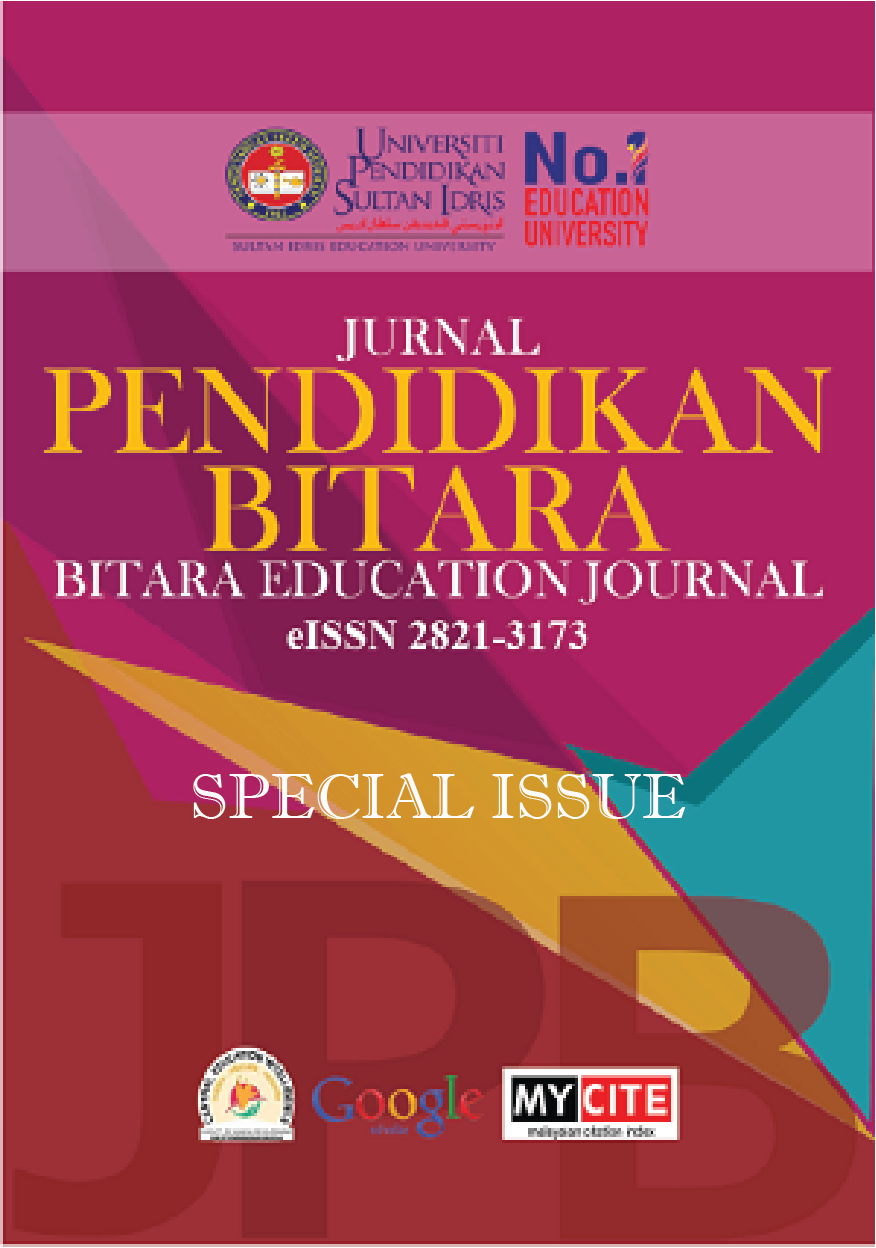Assessing the Usability of Personalised-Multilingual AAC 'Mysuara' Mobile Application
DOI:
https://doi.org/10.37134/bitara.vol17.sp.7.2024Keywords:
'MySuara', PACMAD, AACUQ. Usability, AACAbstract
The 'MySuara' app is a personalised augmentative and alternative communication (AAC) mobile application designed for Malaysian special education classrooms, offering multilingual support and a unique dual-screen modelling feature to enhance teacher-student communication. Besides, it allows the customisation of symbol sets to meet individual student needs, providing a personalised solution for teachers and caregivers. This study aims to assess the usability of the 'MySuara' mobile app using a developed questionnaire, as usability is quantifiable and crucial for user satisfaction. Conducting such evaluations can unveil flaws in the system and reveal user demands, which is vital for successful app development. Usability testing is essential during development to ensure high user satisfaction and successful app usage. However, limited usability models exist for assessing mobile application features. Therefore, 'MySuara' was evaluated using a questionnaire developed based on the Mobile Learning Application Usability model and the People at the Centre of Mobile Application Development (PACMAD) model. Two questionnaires adapted from Parsazadeh et al. (2018) and Marcial et al. (2018), were combined to create the augmentative and alternative communication usability questionnaire (AACUQ) for 'MySuara' app. The PACMAD was deemed the most suitable for evaluating 'MySuara' due to its tailored focus on mobile application usability, encompassing attributes identified as crucial factors impacting usability. The AACUQ usability questionnaire comprised eight attributes: effectiveness, efficiency, satisfaction, learnability, memorability, error handling, cognitive load, and timeliness. Permissions were secured from the authors before integrating the questionnaires, with adjustments made by removing unsuitable items and modifying others. The AACUQ, comprising 40 items on a five-point Likert scale, was administered via Google Forms, including a consent form, demographic section, and questionnaire for participant response. Fourteen participants, 12 special education teachers and two speech therapists, voluntarily participated in the survey. Data collection occurred after participants tested the 'MySuara' app. Overall, participants expressed satisfaction with the app, with mean values for each attribute above average. The study discusses limitations and implications, concluding 'MySuara' is suitable for its intended purpose.
Downloads
References
Alturki, R., & Gay, V. (2017). Usability testing of fitness mobile application : Methodology and quantitative results. Computer Science & Information Technology (CS & IT), 7(11), 97–114. https://doi.org/10.5121/csit.2017.71108
Babakus, E., & Mangold, W. G. (1992). Adapting the SERVQUAL scale to hospital services: An empirical investigation. HSR: Health Services Research, 26(6), 767–786. https://www.ncbi.nlm.nih.gov/pmc/articles/PMC1069855/pdf/hsresearch00075-0070.pdf
Comai, S., De Bernardi, E., Salice, F., & Vali, A. (2019). Maps for Easy Paths (MEP): A mobile application for city accessibility. Mobile Solutions and Their Usefulness in Everyday Life, 105–125. https://doi.org/10.1007/978-3-319-93491-4_6
Harrison, R., Flood, D., & Duce, D. (2013). Usability of mobile applications: Literature review and rationale for a new usability model. Journal of Interaction Science, 1, 1–16. https://doi.org/10.1186/2194-0827-1-1
Hussain, A., Mkpojiogu, E. O. C., Musa, J., & Mortada, S. (2017). A user experience evaluation of Amazon Kindle mobile application. In AIP Conference Proceedings, (Vol 1891, No 1). https://doi.org/10.1063/1.5005393
Joginder Singh, S., Hussein, N. H., Mustaffa Kamal, R., & Hassan, F. H. (2017). Reflections of Malaysian parents of children with developmental disabilities on their experiences with AAC. Augmentative and Alternative Communication, 33(2), 110–120. https://doi.org/10.1080/07434618.2017.1309457
Johnson, E. (2021). Face Validity. In F. R. Volkmar (Ed.), Encyclopedia of Autism Spectrum Disorders (p. 1957). Springer International Publishing. https://doi.org/10.1007/978-3-319-91280-6_308
Marcial, D. E., Montenegro, C. S., Ubarre, R. B., Rivera, M. A. C., Yao, M. S., & Katada, F. M. G. (2018). Development of an Android-based class record for teachers. International Jounal of Scientific Engineering and Science, 2(4), 83–90. http://www.davemarcial.net/uploads/1/4/0/1/14014636/usability-mclassrecord_final-after.pdf.
Mason, J., Classen, S., Wersal, J., & Sisiopiku, V. P. (2020). Establishing face and content validity of a survey to assess users’ perceptions of automated vehicles. Transportation Research Record, 2674(9), 53–547. https://doi.org/10.1177/0361198120930225
Parsazadeh, N., Ali, R., Rezaei, M., & Tehrani, S. Z. (2018). The construction and validation of a usability evaluation survey for mobile learning environments. Studies in Educational Evaluation, 58, 97–111. https://doi.org/10.1016/j.stueduc.2018.06.002
Polit, D. F., & Beck, C. T. (2006). The Content Validity Index: Are You Sure You Know What’s Being Reported? Critique and Recommendations. Research in Nursing & Health, 29(5), 489–497. https://doi.org/10.1002/nur
Radici, E., Bonacina, S., & De Leo, G. (2016). Design and development of an AAC app based on a speech-to-symbol technology. In 38th Annual International Conference of the IEEE Engineering in Medicine and Biology Society (EMBC), 2574–2577. https://doi.org/10.1109/EMBC.2016.7591256
Weichbroth, P. (2020). Usability of mobile applications: a systematic literature study. IEEE Access, 8, 55563–55577. https://doi.org/10.1109/ACCESS.2020.2981892
Weng, P. L. (2015). Developing an app evaluation rubric for practitioners in special education. Journal of Special Education Technology, 30(1), 43–58. https://doi.org/10.1177/016264341503000104
Zali, Z., & Fadzlah, A. F. A. (2016). An Initial Theoretical Usability Evaluation Model for Assessing Defence Mobile E-Based Application System. International Conference on Information and Communication Technology (ICICTM), May, 198–202.
Zhang, D., & Adipat, B. (2005). Challenges, methodologies, and issues in the usability testing of mobile applications. International Journal of Human-Computer Interaction, 18(3), 293–308. https://doi.org/10.1207/s15327590ijhc1803
Downloads
Published
How to Cite
Issue
Section
License
Copyright (c) 2024 Kalaimathi Rajagopal, Low Hui Min , Siti Mastura Baharudin

This work is licensed under a Creative Commons Attribution-NonCommercial-ShareAlike 4.0 International License.





